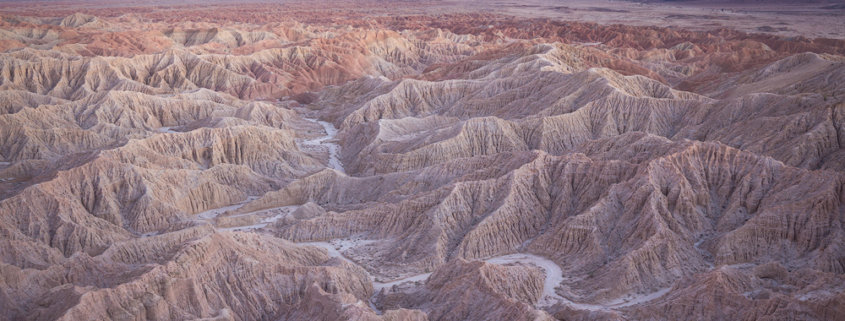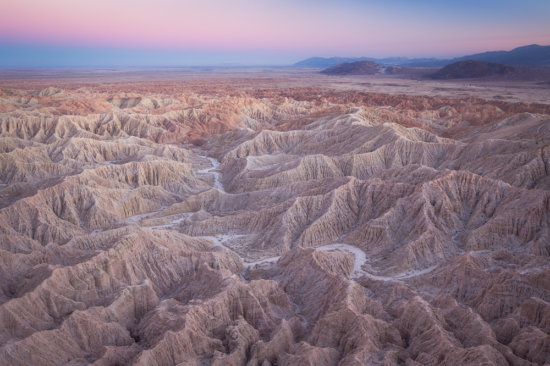7 Tips for Photographing Desert Landscapes
Although I always enjoy autumn, I often look forward to winter because it ushers in a perfect time for desert photography. With more mild temperatures and interesting weather, the next few months will be a perfect time to visit the desert landscapes of the western United States, including the Mojave Desert, the Sonoran Desert, the Great Basin, and the Colorado Plateau, along with the many national and state parks within these larger geographic areas. Below, I share seven tips to help make a photography trip to the desert a success.
#1: Be Prepared for Starkness and Chaos: Desert landscapes are sometimes stark, harsh places and sometimes they are so chaotic that finding order can be difficult. These qualities can present some unique challenges for nature photography. While I have come to love the landscapes in both Death Valley National Park and the Sonoran Desert in Arizona, I have struggled with photographing both. In the case of Death Valley, the stark, desolate feeling of the landscape left me without a lot of ideas during my first trip to the park. After repeated visits, I learned to embrace more simple compositions, look for patterns and textures, and seek out lines and curves in subjects like sand dunes and badlands. In the Sonoran Desert, start with the attitude that you will need to embrace the mix of chaos and starkness and you will be better off, especially if you seek order and neatness in your photography as I do in mine.
#2: Edges of the Day: A few years ago, I spent some time reading the TripAdvisor reviews for Death Valley National Park. Many negative reviewers commented about the expanse of brown that characterizes the park. Well, these people should have gotten up for sunrise or stayed for sunset. Lighting conditions in desert environments can dramatically change the way a scene looks for the better. For example, an expanse of badlands that looks brown during the middle of the day can take on a range of pastel colors at the edges of the day. Golden light and cool shadows right after sunrise or before sunset can transform sand dunes from looking like a featureless blob of brown to a textured expanse of sensual curves. Make sure you get out at sunrise and sunset to see a desert landscape at its best.

Sand dunes in Death Valley National Park
#3: From Grand Landscapes to Small Scenes: Most deserts feel like expansive places with wide open skies and grand scenery. This can make a photographer always want to reach for a wide angle lens to help get everything into a photo. Instead, seek to see a wide range of scenes. Deserts are filled with a wide diversity of subjects, from the grandest scenes to fascinating tiny plants with a lot of subjects in between. Bringing along a full assortment of lenses will help you come back with a diverse portfolio of the desert you visit.
#4: Seek Out Ephemeral Conditions: Some of my favorite photographs of the desert have been taken under unique circumstances. Take the photo of Badwater Basin shared in this post. We keep an eye on many Facebook pages for California and Arizona desert parks. When hearing the news of flooding rains in Death Valley, we knew that the unique conditions could abound across the park and we made a special trip to visit at this time. This same flooding created new expanses of mud tiles and brought wildflowers to the park the following spring. Even if you can’t make a special trip on short notice, you can time your visit for the most typically stormy months. Winter storms can also bring unique conditions, like snow-capped peaks over desert scenery or snow on saguaro cactus. Thus, researching and watching weather and information pages for these parks can help you plan your visit for the time when unique or interesting conditions are most likely.
#5: Reflected Light: Many desert landscapes are highly reflective and change dramatically based on the lighting conditions. For example, a white salt flat, mud playa, sand dune, or canyon wall can reflect light in a way that changes your subject’s appearance throughout the day and under different weather conditions. For example, if fiery pink clouds are in the sky, a white playa or brown dunes will take on a warm hue. A canyon wall will look more golden. Thus, learn to identify reflected light and use it to showcase your subjects under interesting lighting conditions.
#6: Clear Skies: While storms in the desert can bring about magical conditions, clear skies are also common. While this can be frustrating to some photographers, clear skies can also present excellent opportunities for photographing grand landscapes under more subtle light, like the pastel pinks and blues of twilight. For smaller scenes, clear skies can actually produce superior lighting situations. Take the photo of badlands included in this post. On clear days, the glow before sunrise or after sunset can make some landscapes look spectacularly soft and colorful. Strong low light at the edges of the day can also highlight the curves and textures in subjects like sand dunes. Reflected light in canyons can be the strongest on clear days. Thus, embrace clear skies if you have them and look for subjects that can look their best under such conditions.
#7: Be Prepared for Harsh Terrain: Deserts are some of the harshest environments on earth, so be prepared for difficult conditions. While storms can bring exceptional photography conditions, they can also bring flash floods and destructive winds. Terrain is often unforgiving and one mistake can have serious consequences. If you venture out into desert landscapes any time of year, be sure you are well prepared, are carrying proper supplies, have an adequate vehicle, and follow all local precautions. Also work on your navigation skills, as it is very easy to get turned around in the chaotic or featureless landscapes that are common in desert terrain.






